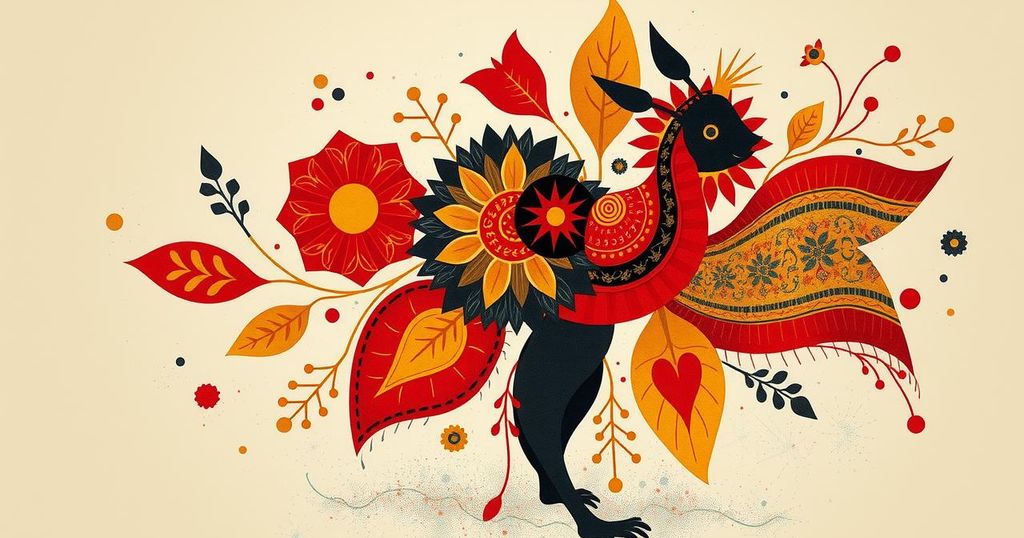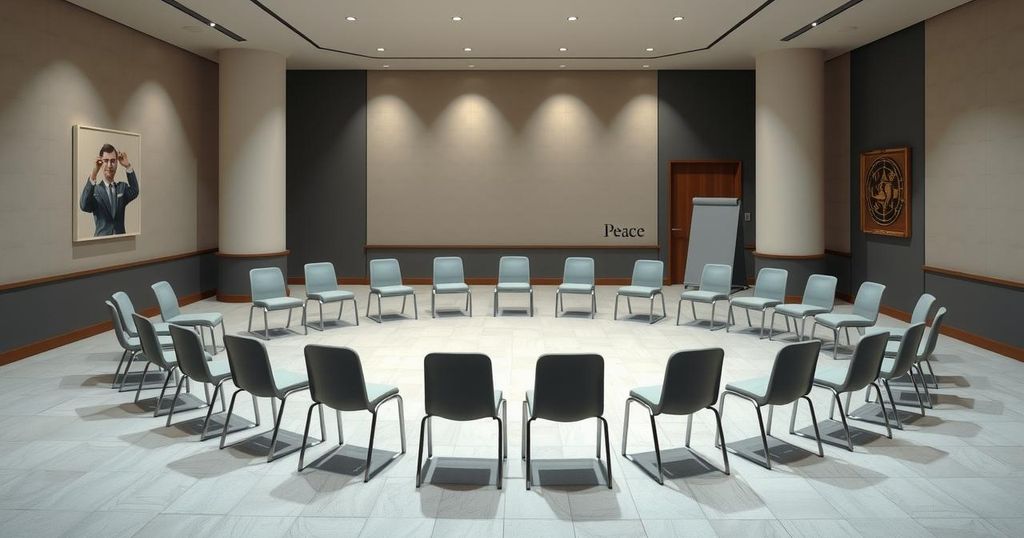Exiled Sudanese artists, including Rashid Diab and Yasmeen Abdullah, reflect on the devastating effects of civil war on Sudan’s art scene, emphasizing the importance of preserving their culture and identity. The conflict has led to significant losses of artworks and artists, prompting a collective effort to maintain Sudanese heritage through their art, even in exile. They aim to challenge perceptions of Sudan, highlighting its creativity and resilience despite ongoing struggles.
Exiled Sudanese artists are reflecting on the impact of ongoing civil war on their nation’s art scene. Rashid Diab and his son Yafil Mubarak, both artists, express their views on the preservation of Sudanese culture and identity after nearly two years of living in exile. Their dialogue highlights the generational contrast between hope and disillusionment regarding the future of Sudan and emphasizes the weight of belonging.
The civil war that erupted in Sudan in April 2023 has severely affected the blossoming art scene in the country. Prior to the conflict, Khartoum had seen a rise in galleries and art institutions, yet now many have been destroyed or abandoned, leaving a void in creative expression. The vibrant hub for Sudanese art, Downtown Gallery, experienced significant loss, including hundreds of paintings and the pain of irretrievable works by elder artists.
Rahiem Shadad, founder of the Downtown Gallery, estimates a loss of thousands of artworks nationwide, with undocumented pieces being erased forever. Efforts like the Sudan Art Archive, developed by gallerist Reem Aljeally, strive to preserve Sudanese art history amidst this calamity. Furthermore, the conflict led to over 12.5 million Sudanese being displaced, including artists and curators committed to safeguarding cultural memory.
Among them is Yasmeen Abdullah, who recounts her harrowing escape while pregnant, illustrating her connection to art during tumultuous times. Her work incorporates elements of Mahmoud Darwish’s poetry, reflecting resilience and the experience of exile. Abdullah hopes that her art will allow her son to find his identity within its layers as he grows older.
Artist Ala Kheir, once celebrated for capturing Sudan’s beauty through photography, now operates remotely to document the war’s destruction. He shifted his mentorship program, The Other Vision, to continue nurturing talent from outside Sudan, while also emphasizing the importance of storytelling amidst the chaos.
Rashid Diab muses on the complexities of creating African art in exile. His artwork chronicles the vibrancy of daily Sudanese life, yet is laden with nostalgia and regret for his lost cultural space, the Rashid Diab Arts Centre, which was destroyed in the conflict. As the war persists, the possibility of returning home appears bleak for many artists, casting a shadow over their hopes for renewal.
Yasmin Elnour, another Sudanese artist, incorporates her heritage into collages that address the question of identity in the absence of a physical homeland. The ongoing themes of loss and possibility permeate her work as she explores her Nubian roots and the significance of cultural survival.
Amidst this turmoil, Sudanese artists in exile continue to create, choosing to act as cultural ambassadors. Yafil Mubarak poignantly remarks that though they are not fighters, their art contributes to a broader understanding of Sudan beyond the conflict. They aspire to portray Sudan’s rich tapestry of thought and creativity, reminding the world of its artistic heritage.
The ongoing civil war in Sudan has inflicted profound damage upon the country’s art scene, leading many prominent artists to seek refuge in exile. Figures such as Rashid Diab and Yasmeen Abdullah exemplify the resilience of Sudanese culture through their artworks, despite the tragic circumstances surrounding them. As they create and preserve their heritage, these artists strive to present a narrative that encompasses the depth of Sudan’s identity, and serves as a testament to their enduring spirit amid adversity.
Original Source: www.artnews.com




